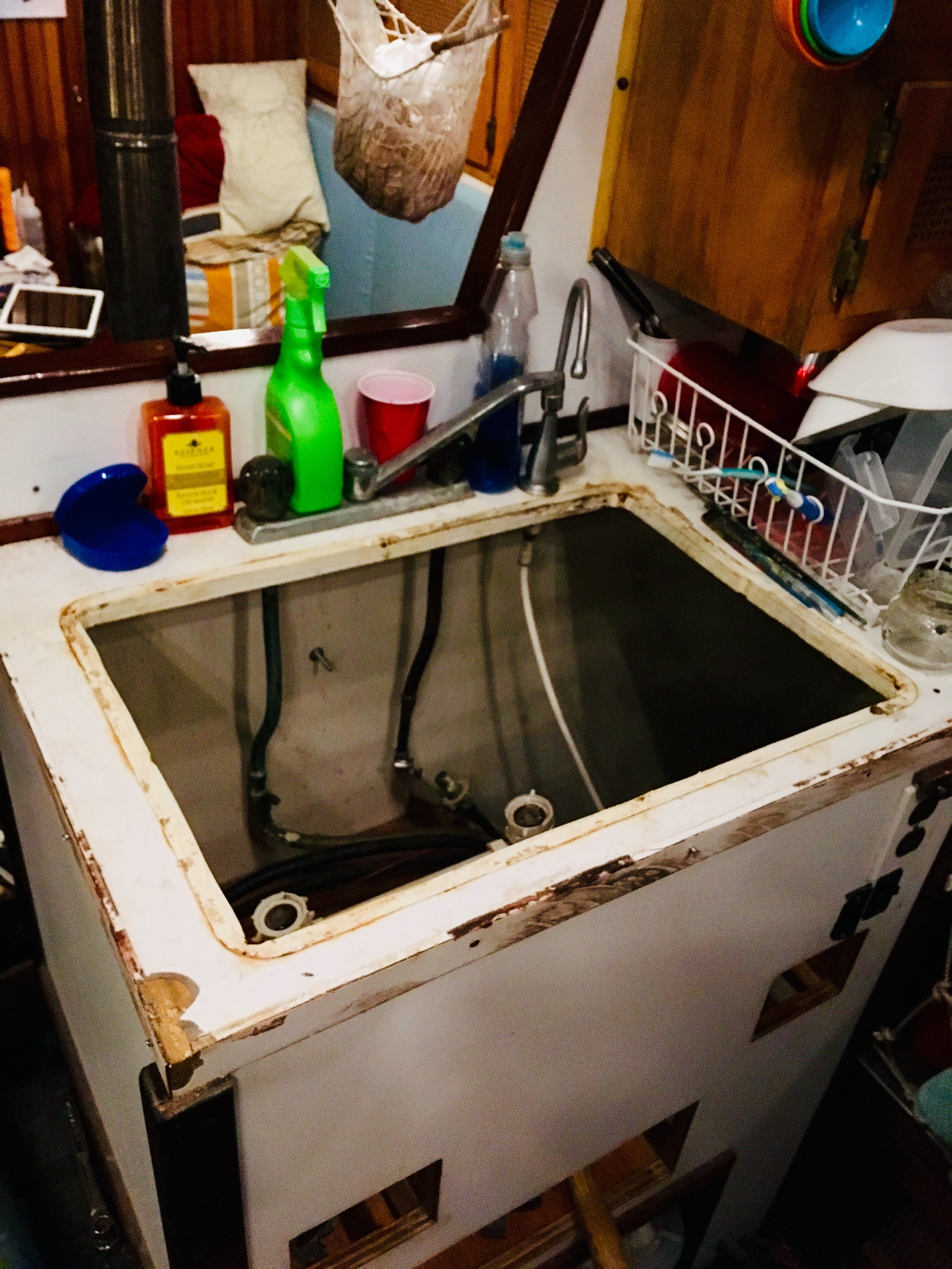Fiddleblocks are wonderful. They keep things from sliding off of shelves and prevent many a mess from every occurring. Having fiddleblocks on the shelves in our pantry means that the pots and pans that will live in this area “should” never fly off their shelves and smash into the plumbing of the galley sink.
“Should” is a wonderful word. Everything should work and nothing should fail, but the truth is, in a heavy seaway during a storm, nothing goes as it “Should”.
To protect the plumbing from a flying frying pan, I installed a barrier made out of the same Cyrptomeria. This divider partitions the space under the sink into plumbing space and storage space. To gain better access to the plumbing, the boards can be pulled off with a few screws, but I can usually do everything through the tiny drawers that live under the sink.
These planks serve as a guard against a broken sink drain, or a damaged seacock. Plumbing is the routing of water and if something fails, it’s a leak. A leak the size of the galley drain could sink the boat, so extra steps must be taken to ensure that no harm will come their way; hence, the plumbing/pantry divider.









